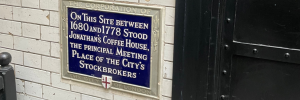Henry Greathead, after his return to England in 1784, was compelled to join the navy in Portsmouth. However, his true passion lay in boat building, which he dreamt of pursuing in his hometown of South-Shields. His ambition was to design a boat resilient enough to navigate rough seas.
To construct this boat, Greathead required funds for the necessary materials – something he lacked. Therefore, he penned a letter to two underwriters, Mr James Forsyth and Mr Peter Warren, whom he had previously interacted with during a false insurance claim incident in Calais. In his letter, Greathead shared his unique boat design and requested their assistance in securing funding.
To Greathead’s astonishment, not only did he receive a donation, but Warren also introduced him to the Duke of Northumberland. The Duke graciously offered to cover all costs related to building the first boat aimed at rescuing shipwrecked individuals or others stranded at sea.
While Greathead initially wanted to name his invention the Safety Boat, it was the Duke of Northumberland who suggested the more memorable name – the Life Boat.
In the fall of 1789, Greathead launched his first boat, christened ‘Northumberland’, measuring 30ft in length and 10ft in width.
The Northumberland’s maiden emergency mission arrived several weeks later when a small warship, the Edinburgh, was sinking 1.5 miles from the shore. Despite the turbulent sea, they managed to save all seven lives on board, marking the mission a success. The boat’s ability to endure such harsh conditions underscored its exceptional design.
However, in 1801, the government declined to fund a popular proposal for constructing more lifeboats, suggesting it should be a ‘private enterprise’. Following this, no individual stepped forward with the necessary funding. Subsequently, Lloyd’s, encouraged by Angerstein, donated £2k, and other donations started flowing in.
These contributions led to the creation and equipping of 14 lifeboats. Further donations allowed for even more lifeboats, leading to tens of thousands of lives saved, which would have otherwise been lost at sea.
Lloyd’s continued their financial support until 1824, at which point the flourishing National Life Boat Institution, headed by the Duke of Northumberland himself, took over the reins.




